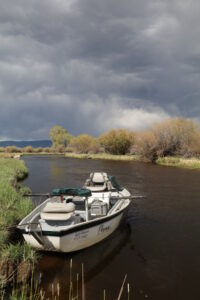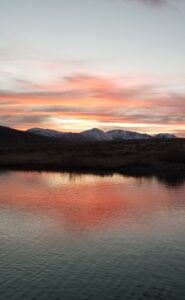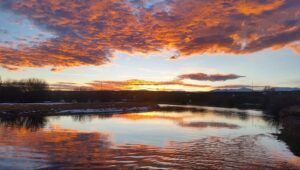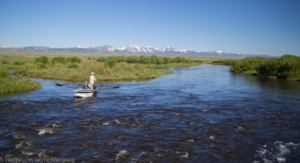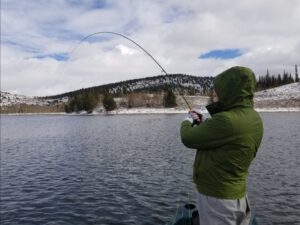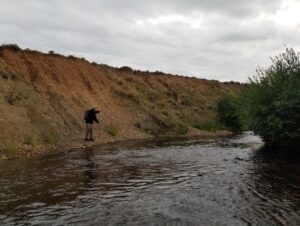The Fishery
This picturesque valley is surrounded by five designated wilderness areas and plentiful National Forest lands that are speckled with high alpine lakes and streams, not footprints. These waters thrive with native Cutthroats and Brook Trout that are eager to take a fly and unaccustomed to the presence of humans. Long, cold winters bring above-average snowpack, which ensures ample water throughout the season to the waters below. The smaller high country streams combine to create the meadow streams or tributary streams that flow out of the foothills and into the meadows. As the gradient reduces, water slow’s, and begins meandering through willow-lined hay meadows. Never-ending oxbows, overhanging willows, and deep cut banks are the hiding places of much larger specimens including wild Browns and feisty Rainbows. Anglers find that larger offerings are what it takes to entice these elusive fish, leave your light tippets and micro flies at home because here it’s, “go big or go home.” Once the meadow streams combine, a world-class fishery is born, the North Platte. Two distinct sections within miles of each other make this river unique. In the valley, the river characteristics consist of a slow meandering meadow river with classic wide riffles, deep runs, and braids.
On the river’s journey northward it tumbles into the spectacular Northgate Canyon near the Wyoming/Colorado state line where steep canyon walls, boulder fields, and dreamy dry fly flats are loaded with wild populations of wily Browns and Rainbows. Caddis, mayflies, stoneflies, crustacean’s, and terrestrials flourish in this cool, clean, canyon environment, offering not only sustenance for trout but ample opportunities for anglers wishing to match the hatch. Within the valley, numerous stillwaters referred to as “sagebrush” lakes attract anglers in pursuit of trout growing to true trophy potential. In particular, the Delaney Buttes, designated as Gold Medal waters by the state of Colorado, are the quintessential trout factories where fish can grow up to one inch per month due to the abundance of food. Aquatic insects such as scuds, Callibaetis mayflies, chironomids, damselflies and more offer a buffet of trout food in addition to crayfish, leeches, and minnows.

